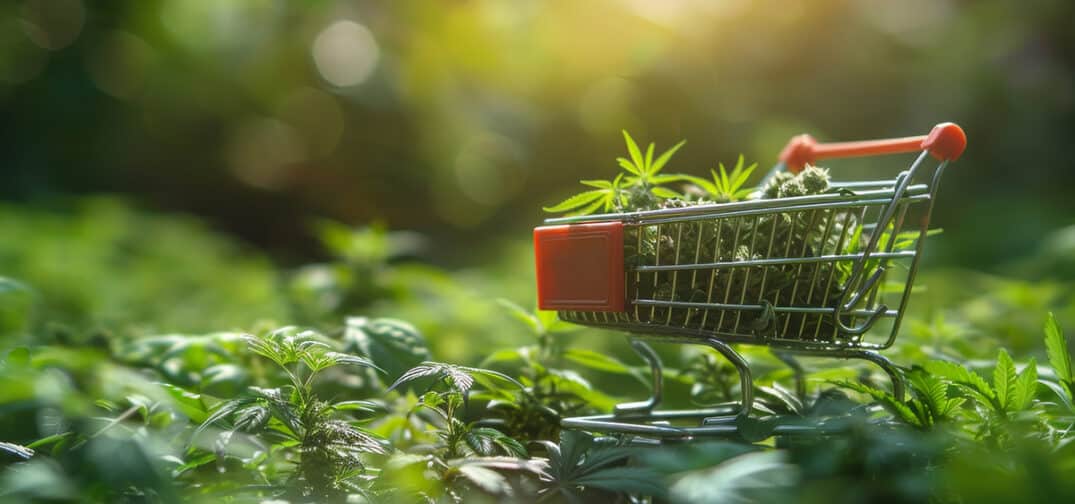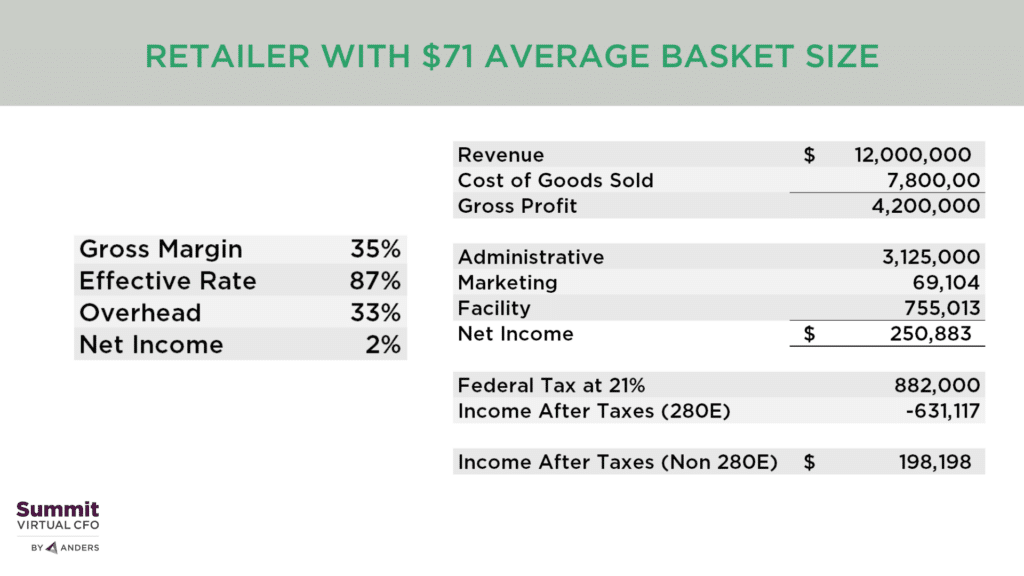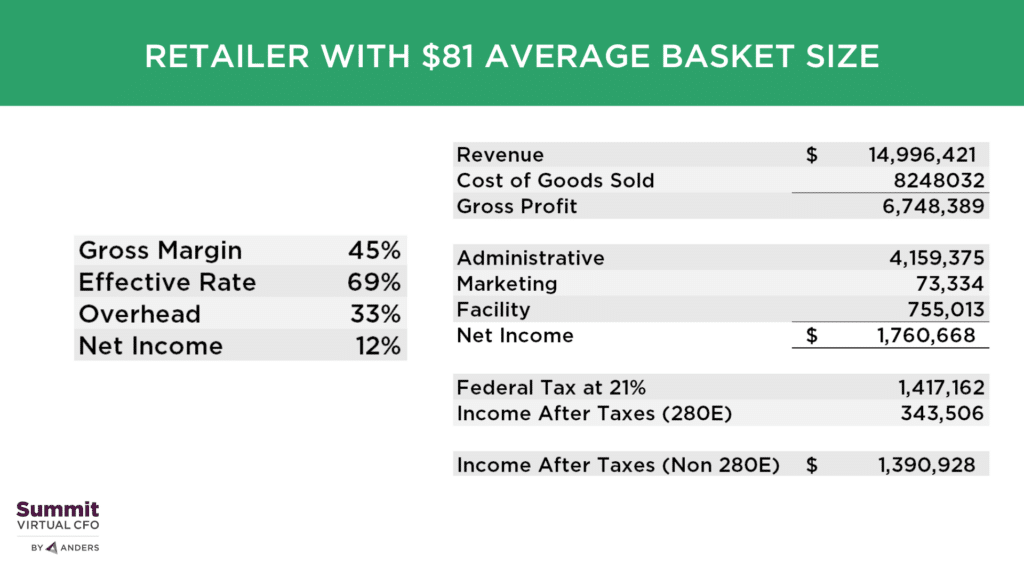For cannabis retailers, 2023 was a year of busy stores and flat revenue. According to a Dutchie Report, the increase in visits was offset by a decrease in average basket value as retailers responded to heavy competition with heavy discounts: the average discount was 28.5 percent per order, and about 65 percent of total orders processed were discounted.
As more markets come online and mature, competition will only increase. So how can retailers get to profitability and stay there?
Certainly, once Section 280E goes away with the upcoming reschedule, retailers will get to keep more of their hard earned cash. But that’s no reason not to try to optimize the things you can control. One example, suggested by Dutchie, is to use digital payment systems like theirs, as consumers using DutchiePay had a 27% increase in average basket value.
Another way to systematically improve profitability is by tracking retail metrics. This approach, part of what we call “profit-focused accounting,” boils down to accomplishing financial goals by breaking down revenue into non-financial drivers: essentially the behaviors you can control to improve profitability.
A few criteria for choosing non-financial drivers: they need to be consistently controlled and monitored through very clear metrics; and they need to be limited to a few metrics, so that the amount of data is manageable.
Basket size is an obvious choice: it’s the most important metric for a retailer. We’ll look at how to measure and increase basket size below.
Calculating and monitoring basket-size
A calculation of basket size starts with total sales per month: If you sell $100 (according to your income statement) and make ten transactions (according to your point of sale data), the basket size would be $10.
Basket size should be measured monthly – at least – and benchmarked across your industry. (Legacy markets like Oregon and Washington have basket sizes in the mid-to-high 30s, while emerging markets like Missouri and Maryland are at the upper range of $80-$90). By following this number regularly, you can look for seasonal trends.
Since basket size times the number of transactions per month equals revenue, if basket size comes down, there are high chances revenue is coming down with it.
As a retailer, you need to come up with a strategy around basket size. Ask yourself: “Is my basket size in line with my market” and, if it’s lower, “am I using a high volume strategy to be able to come up with the right profitability and revenue that I’m looking for?” Ultimately, you don’t want to sacrifice market share, but you don’t want to sacrifice profitability either – and that’s what retailers are inadvertently doing with their discounting.
Increasing basket size: Cross-selling and upselling
When monitoring basket size, the next questions to ask yourself are: “Where’s the right basket size that you’re comfortable with?” and “How do I build that without heavy discounting?”
When looking at how you’re going to increase your basket size, you want to look at two things: the number of items per basket, and the price per item. If we’re seeing that price per item come down, then we’re obviously seeing the size of those baskets come down.
Two ways to increase the basket size are cross-selling or upselling.
Cross selling is suggesting additional products from a different category. The Dutchie report suggests that pre-rolls, flour and edibles are growing categories, so you could train budtenders to interest customers in those products.
Upselling is suggesting a larger or more premium item in the customer’s original choice category, which also increases basket size.
Here’s a concrete example of how non-financial drivers can add to your bottom line: Simply train your sales staff to ask every customer if they want to add a pre-roll to their transaction – a $4 increase. If that question has just a 10% conversion rate, let’s look at what that does to your profit:
Let’s just say baskets for this particular retailer were 16,667 with an average basket size before we do this upselling strategy is $61.
If our budtenders manage to convert a sale on a $4 item, 10% of the time, the average basket size goes up to $61.60 – a minimal change, but over a month period, that adds $10,000 per month, $120,000 per year, and $600,000 over a five-year period – all without increasing number of transactions.
That $.60 increase seems miniscule, but it increases gross margin, so as long as you’re doing these things and doing them consistently, there’s huge potential.
Basket size and profitability
What’s the basket size you need to hit to be profitable? In cannabis, every penny matters. Forecasting revenue comes from looking at basket size along with customer retention, but you’re also going to want to forecast your overhead: people, marketing, your facility expenses.
Let’s look at two examples, using a retailer with healthy numbers.
Revenue
Basket size: $71
Daily transactions: 463
$1000 sales per square foot
Revenue: $12 million
Once taxes are subtracted (under 280E), that retailer is operating at a loss.
Boosting basket size and daily transactions
If we increase basket size from 71 to 81 and increase our average daily transactions from 463 to 507, now we’re at $15 million in revenue. Overhead might come up a little bit, but this is the required basket size to make a profit after 280E.
Once 280E goes away, the retailer in the first scenario would be slightly profitable, while in the second example the retailer would be making around 10-15% profit as a percentage of revenue.
These KPIs help you with visibility into the future because they help you build your forecast and set realistic financial targets. They may not tell the full story on their own, but they generate conversations to identify the right actions to take to increase sustainable profitability.
End


